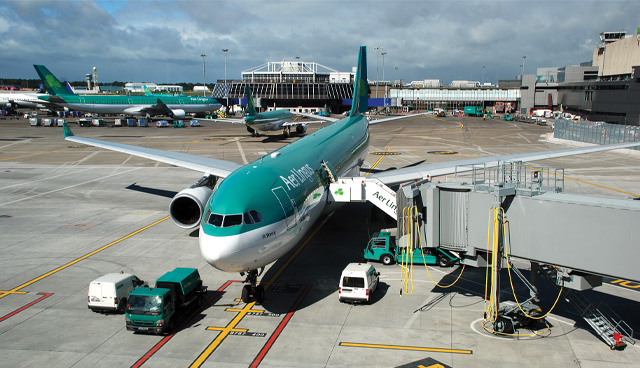Airport and port expansion key in light of Brexit

As Ireland invests in and grows its infrastructure under the National Development Plan (NDP), the airports and ports of the country look set to experience a decade of significant growth under fresh plans.
The most notable and high profile of these infrastructure projects is the construction of a second parallel runway at Dublin Airport. Ground has already been broken on the project and construction is well underway on a plan that was given planning permission as long ago as 2007. Having been shelved not long after due to the economic crisis, the plan was revived in 2016 after significant economic and airport passenger growth.
The runway will be delivered within the airport’s existing landbank and will be 3,110 metres long, 1.6 kilometres north of the existing main runway. Construction on the €320 million project began in 2016 and the process is expected to employ 1,200 people over its five-year duration. The runway is expected to be operational in 2021.
On top of the runway expansion, the NDP also includes the construction of the new €50 million visual control tower at Dublin Airport. Construction was completed in March 2019, with the tower now standing as Ireland’s tallest occupied structure, at 87.7m tall. The tower is due to be capable of single runway operation this year and will transition to parallel runway operation upon the completion of the second runway.
Separate from the NDP, outgoing Minister for Transport, Tourism and Sport Shane Ross TD announced the allocation of funding for regional airports under his department’s Regional Airports Programme. The nearly €8.6 million total will be split, in descending order of share, by Ireland West Airport Knock, Kerry and Donegal. Based on an expected average annual growth rate of 3 per cent, the NDP predicts Irish airports to accommodate around 45 million passengers per year by 2027.
Ports
There are three major port infrastructural projects included in the NDP: the Alexandra Basin redevelopment at Dublin Port, the Port of Cork’s Ringaskiddy redevelopment and the capacity extension works due to be undertaken by the Shannon Foynes Port Company in Limerick. With a cumulative cost of almost €350 million, all three of these projects have already commenced.
The €230 million infrastructural investment at the Alexandra Basin, including conservation work on the port’s Victorian industrial bridge, is the largest of these projects. Restructuring work on the quays and berths of the port will allow for larger vessels, while capital dredging and the deepening of the navigable channel from 7.8 metres to 10 metres are also included in the plan scheduled for completion in 2022.
Similar will happen in the Port of Cork, where the €90 million plan to alleviate physical constraints such as depth at the City Quays and Tivoli will open up the ports to larger vessels. The jetty expansion program, the joining of the East and West Jetties and the infill behind, land purchase and site development at Foynes due to be finished in Limerick by 2022 will also see the country’s port capacity expand.
This is the key thrust of port infrastructure investment, especially in the light of Brexit, which the NDP states highlights “the importance of continuing investment to further improve the quality of port facilities… given their role in maintaining transportation linkages with crucial EU markets”.





